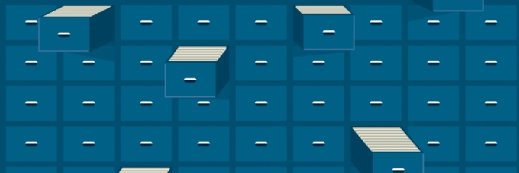
Getty Images
StorOne unveils S1 Backup for ransomware protection
StorOne expands its reach with S1 Backup to combat ransomware attacks. The new software emphasizes an all-flash backup tier and immutability as part of its strategy.
StorOne is getting into ransomware protection with its new S1 Backup.
Building off the same technology used for StorOne enterprise storage, S1 Backup focuses on data protection, adding a layer to protect against ransomware; performance, using flash for instant recovery and its software for faster RAID rebuilds; and better total cost of ownership, utilizing up to 90% of the capacity on both flash and hard drives, according to the vendor.
StorOne, a software-defined storage vendor, has provided backup features before, but the S1 Backup, an on-premises product that can also be used for archiving, plugs holes the vendor sees in backup storage products. The software was already available to existing S1 customers with the latest upgrade and can now be purchased as standalone backup through hardware partners or directly by customers and put on qualified hardware. S1 Backup works with Veeam, Rubrik, HYCU and Commvault, according to StorOne.
Backing up data, taking snapshots at regular intervals or replicating data and storing it in a separate system are the only ways to recover from a ransomware attack, according to Marc Staimer, president of Dragon Slayer Consulting. Cyber attacks are increasingly targeting systems that provide that functionality.
"What's really changed with data protection vendors is that they are adding more and more additional layers of ransomware defense," Staimer said.
Targeting backup systems is also prompting storage vendors like StorOne to provide ransomware protection.
Staimer said StorOne's S1 Backup addresses should be one part of a customer's larger anti-ransomware strategy, but that the strategy should also include virus scanning at endpoints and by signatureless engines during backup; content disarming and reconstruction; multifactor authentication to make policy changes; and machine learning heuristic behavior tripwires for auto recovery.
Backup and protection
Several backup software vendors have done a good job improving the fight against ransomware, said George Crump, chief marketing officer at StorOne. However, there is a vulnerability for stored backup data, as it has become a growing target for attackers. To combat this, S1 Backup provides immutability, where data backups are stored and cannot be deleted, across all protocols including NFS, SMB, S3, iSCSI, Fibre Channel and NVMe-oF, he said.
Immutability stems from StorOne's snapshot technology. Because snapshots are read-only, the data remains untouched even in a vulnerable environment. Millions of snapshots can be maintained indefinitely without impacting performance, Crump said.
StorOne's snapshot technology is where it shines, Staimer said. The vendor brings a high level of efficiency to its software, and, echoing Crump, Staimer added that snapshots can be taken frequently without limit and without affecting performance. Since snapshots take up minimal space, they can be easily managed.
Performance, HDDs and TCO
The vendor has what it calls a flash-first backup technology. The backup data lands on a persistent flash tier, not a cache. The flash tier is where the instant recovery occurs. In most recovery cases, customers will experience similar performance running their VM or application data on S1 Backup as they would in production, Crump said.
Most of the time, the flash tier is large enough to handle full and incremental backups, he said. This enables customers to back up their data more frequently, which helps reduce the recovery point objective.
The flash tier is key to the speed of recovery without interfering with production performance, according to Crump. StorOne claims it can utilize 90% of the flash tier for a recovery that's 10x faster than competitors, he said, without citing examples.
But the flash tier tends to cost more for a higher capacity, raising the total cost of storage ownership. For this reason, StorOne is also integrating spinning disks into the product.
StorOne's S1 Backup uses high-capacity HDDs, up to 20 TB. As with the flash drives, StorOne can hit a 90% utilization rate with the HDDs, filling the drives near the maximum and thus needing less hardware overall. No hot spares are required, and StorOne claims RAID rebuild rates of less than two hours. StorOne users can mix drives and drive densities without changing any of the configurations. As the RAID rebuild is happening, the instant recovery is taking place on the flash tier, meaning the rebuild doesn't affect the instant recovery.
Dragon Slayer's Staimer said, if customers are storing and backing up data on StorOne, they'll likely see the benefits laid out by StorOne. But if customers are storing to another vendor's software and backing up to S1 Backup, performance could vary based on the backup server and the resources writing the backup.




